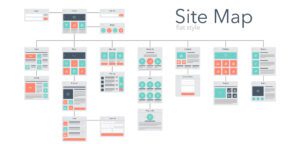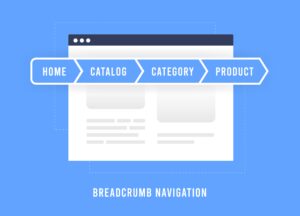
Optimising your website architecture for SEO

Your website is, essentially, your online thumbprint. But just because it looks good doesn’t mean it does any good, especially if your website architecture optimisation is lacking.
When your users can’t access your website to find the information they need – or simply can’t understand the content itself – you need to ensure your technical SEO is up to scratch.
Think of architecture as a well-organised filing cabinet, helping to guide your users from one place to another, improving their experience and streamlining the site itself. But where do you start?
In this blog, our team of in-house experts will show you how to properly organise your website’s architecture, offer deeper insights and you optimise your existing structure.
But first, let’s cover the basics.
What is it?
Website architecture optimisation is the practice of organising, categorising and connecting your site’s pages. As well as effectively helping your users go from page to page, helping them find what they’re looking for, a well-optimised architecture guarantees smoother UX, while also allowing search engines to efficiently crawl and index your content.
We’ll go a little further into the benefits in the next section.
Why is it important to SEO?
It might seem obvious, but search engines like Google prioritise websites that are easy to understand.
Ergo, website architecture optimisation that uses clear internal linking can directly help search engines crawl and index your pages – boosting your rankings in the SERPS.
Emphasising these links can’t hurt SEO efforts, either. Strong internal links can help you build and pass authority (often referred to as link equity) from higher-ranking pages to others. This can essentially ‘sign-post’ to less popular pages, helping to improve their overall ranking potential.
Off the back of this activity, well-organised site structures can be rewarded by Google. This is in the form of organic sitelinks in SERPS, which are additional links below your main listing that serve direct sections of your website to those looking for that particular piece of information. The result? Boosted organic clickthrough rates thanks to fresh entry points.
Essentially, website architecture optimisation is good for the user and good for search engines. What’s not to like?
Creating optimised website architecture

Now we’ve nailed the benefits, let’s touch on how you can actually implement website architecture optimisation.
When you’re building your website, consider the following steps to ensure it is as appealing as possible to your visitors and Google itself.
Flat first
Aim for a “flat” website architecture, which means that most pages are reachable within three to four clicks off the homepage. This allows both users and search engines to reach all your content quickly and easily.
Also create and submit an HTML sitemap for your website, which helps search engines better index – and understand – your pages.
Content taxonomy
Simpler is smarter. Using clear and logical categories and subcategories, organise your content into grouped topic clusters for relevant information – not only making it easier for navigation but also sending clear signals to Google about your content hierarchy.
Strategic internal links
To help users navigate your site and distribute link equity throughout your content, use a strategic internal linking plan. Always avoid keyword stuffing, and focus on using natural language that links to pages that will genuinely interest your readers.
Straight-talking URLS
URLs should always be clear, concise and accurate. To do this, ensure they are always contextual, with user-friendly relevant keywords – not too simple, but not too wordy!
Breadcrumbs

Implement breadcrumbs – a navigational element that shows users their current location within the website hierarchy – which gives users the ability to ‘backspace’ to previous sections. It’s handy if anyone needs further context, or simply wants to explore what they last read.
Tackling your existing website
Not starting from scratch? Here’s some tips and tricks to keep your current website architecture in top shape.
Content and linking audits
Sometimes it’s best to check what’s already there. You can do this by conducting audits for content and internal linking structures, helping you check what needs improving and identify any knowledge gaps. That includes spotting your content to make sure it resonates with your overall website strategy and user needs, while observing the internal linking structures.
Ask yourself:
- Are the right pages linked together?
- Are there any orphaned pages?
- Do these links make contextual sense with the anchor text?
New direction and redirection
Is your current navigation menu clear and easy to use? If not, make adjustments or implement user or A/B testing to gather feedback.
Spot duplicate content and consolidate it where possible, helping you prevent penalties from search engines and any user confusion. Implement proper 301 redirects to make sure users and search engines are served the most relevant pages.
The Embryo approach
Want to tackle your website’s architecture – but aren’t sure where to start? With years of experience in creating specialised content plans and SEO strategies for our clients, we know what it takes to make your website’s foundations strong enough for top-level SEO.
To get key insights into your existing SEO position – or to get your content journey started – get in touch with us today!